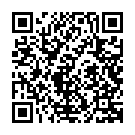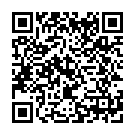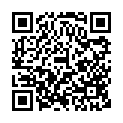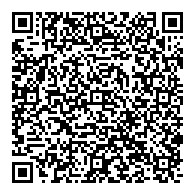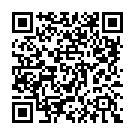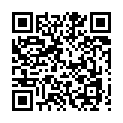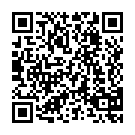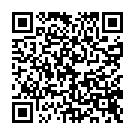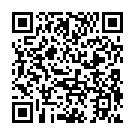Short answer: Yes, with a but…
Long answer: read on….
In the beginning…
First, there was mono, then stereo.. finally, surround sound. Sadly, surround sound (Quadraphonic) music didn’t take off when it was first available for home users. This was mainly due to the fact there was no standard.
Reproducing mono on a conventional vinyl LP was simple enough, make a long spiral moulded into a piece of plastic which makes a needle (stylus) vibrate to the sound you want, then amplify the output. Stereo was also not too difficult, make the groove in such a way that the needle vibrates both horizontal and vertically.
All changed when you try and cram 4 channels onto the medium, as there are no other directions the needle can move. So, there were about 10 different solutions to this issue, the 3 most common (used by various record companies in the 1970s) were:
- SQ (Stereo Quadraphonic)
- QS (Quadraphonic Stereo)
- CD-4 (Compatible Discrete 4) A.K.A. Quadradisc
Out of the 3 systems, only CD-4 produced a true Quadraphonic sound.
SQ was introduced by Columbia Broadcasting Systems (CBS) and used matrixing to encode 4 channels onto the LP. This meant that on the disc was a two channel sound, the discs could be played back on any stereo system, or stereo with an SQ decoder attached. These discs would usually bring up some issues if attempted to played on Mono equipment (the same problems would occur if they were broadcast over the radio, and the receiver was unable to pick up a stereo feed). When the SQ signal is decoded by the receiver, they hear 4 separate channels, though the separation between the front and rear channels isn’t perfect. This was an example of lossy encoding, as the original 4 channel input was altered after being matrixed and decoded.
QS was created by Sansui. It too is an example of matrixing. It was totally incompatible with SQ, but used by record companies who weren’t using the SQ system. QS was, famously, used on the soundtrack of the 1975 musical film, Tommy. The QS encoded sound would be decoded in the cinemas, that had the technology to do so, to generate the front and rear left and right channels whilst a separate feed was used to provide the centre and bass. All releases of the film’s soundtrack (on Polydor LP and CD) still have the original QS encoding, and there are various tools available on the internet to decode it by software if one desires.
The final format was CD-4, which was the only true Quadraphonic system to make it to the top 3. Record labels who hadn’t adopted either of the matrixing formats would most likely have opted for this format. The format works very similar to have Stereo FM radio works… so similar, actually, that it’s basically the same technique but using two channels rather than one!
The LPs would have the four channels encoded exactly the same way they are done on a stereo record only in two sections. Frequencies between 20Hz to 15kHz would have the data for both the front and rear channels merged “in phase”, meaning that the rear information was just placed on top. Frequencies between 30kHz and 45kHz would have the front and rear channels merged “out of phase” meaning that the rear channels cancelled out sounds in the front channels.
Basically, the signals look like this: (L = Left, R = Right, F = Front, B = Back/Rear)
+-------------+-------+-------+ | Frequency | Left | Right | +-------------+-------+-------+ | 20 Hz-15kHz | LF+LB | RF+RB | | 30kHz-45kHz | LF-LB | RF-RB | <-- Note how the rear channels are taken away from the front +-------------+-------+-------+
If a CD-4 was played on stereo equipment, the listener would hear the in phase channels as a stereo image, and wouldn’t be able to hear the out of phase signal as it’s beyond the range the human ear can hear.
The CD-4 decoder would lower the pitch of the out of phase information, then do the following to separate the channels from the LP:
(LF+LB) + (LF-LB) = 2LF + (LB-LB) = 2LF <-- Left Front (LF+LB) - (LF-LB) = (LF-LF) + 2LB = 2LB <-- Left Rear (2 minuses make a plus) (RF+RB) + (RF-RB) = 2RF + (RB-RB) = 2RF <-- Right Front (RF+RB) - (RF-RB) = (RF-RF) + 2RB = 2RB <-- Right Rear (again, 2 minuses make a plus)
As you can see, 4 channels are fully recovered. The down side to this format was that you needed a good cartridge that could handle the high frequency sub-carrier, and that high frequencies tend to wear down first after repetitive playing.
A New age…
…the digital age to be exact!
Quadraphonic sound could be considered a failure, but it didn’t totally die out. With digital sound, options were more flexible, and there are, once again, a few options when it comes to surround music. This time, we have 5.1 sound. Three popular formats are SACD, DVD-Audio and DTS-CD.
I won’t go into too much detail on how these work, but both SACD and DVD-A are lossless formats, whilst DTS-CD is lossy, but not in the same way Matrixing was lossy. DTS still has all 6 separate channels, only they’re compressed in a similar way MP3 is.
The benefits?
What’s so good about surround sound? The added depth in your music, sound now comes at you from all directions. If you’re sitting in the sweet spot, you’ll hear so much more in your music. Parts that were drowned out in the stereo versions are usually directed to the rear channels, where they can be heard more clearly.
Live albums can be mixed to sound like you’re in the audience, by directing what’s on stage to the front channels, and the audience and ambient sounds to the rear.
Of course, you need to have a surround system, and one of the compatible decoders to use any of the formats (Digital or Analogue), but in my opinion, it’s worth it!
But in reality, the only way to truly describe the sound is to hear it for yourself
Cheers




